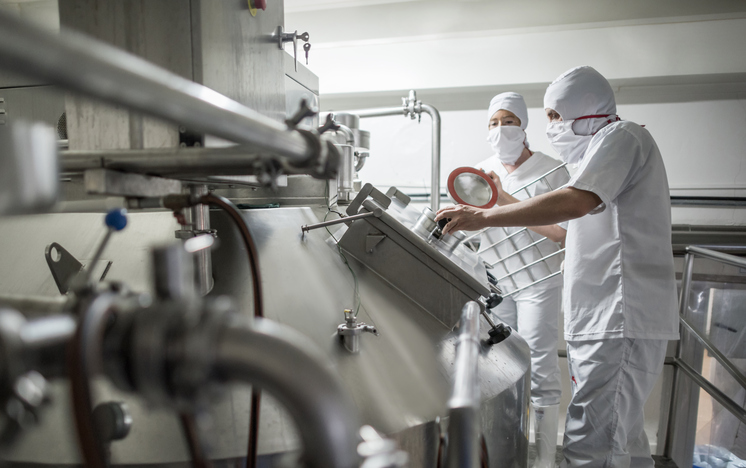- Home
- Science
- Our Work
- Air Pollution
- Agriculture, Farming and Pesticides
- Asthma and other Lung Diseases
- Coronavirus Pandemic (COVID-19)
- Exposure to Chemicals and Dust
- Exposure to Nanomaterials
- Human Exposure
- Neurodegenerative Diseases
- Musculoskeletal Disorders
- Occupational Cancer
- Sustainable Working
- Sustainability and Climate Change
- Stress, Wellbeing and Psychosocial Issues
- COVID-19 IOM Study of Face Coverings in Retail Environments
- Styrene Study
- PROTECT COVID-19 National Core Study
- Firefighters and Cancer – IOM Report
- MORtality Study of Former Professional Footballers in England and Wales (MORSE) Study
- Our Scientists
- Our Expertise
- Nano Material Services
- Development and Management of Data and Information Systems and Services
- Ergonomics Design and Evaluation
- Epidemiological Studies & Methods
- Exposure Assessment
- Health Impact Assessment (HIA) and Risk Assessment
- Policy Evaluations
- Study Design and Statistical Analysis
- Systematic Reviews and Meta-analyses
- Toxicology
- Workplace Cluster of Disease
- IOMLIFET
- IOM Scientists Advocate Tighter Standards for Airborne Dust at Work
- Research Project on Work Related Musculoskeletal Disorders
- Styrene Study
- Firefighters and Cancer – IOM Report
- IOM Library
- Contact our Research Experts
- Our Work
- Occupational Hygiene
- Case Studies
- Air Quality Sensors
- COSHH Assessment
- Dust Exposure
- Environmental Management
- Face Fit Testing
- Hand-Arm Vibration
- Indoor Air Monitoring
- Laboratory Animal Allergens
- Legionella Risk Assessment
- Local Exhaust Ventilation
- Noise Monitoring
- Thermal Exposure Monitoring
- Workplace Exposure Limits (WELs)
- Welding Fumes
- Remote Monitoring Services
- Formaldehyde Exposure Monitoring
- Biological Agent Exposure Monitoring in Waste Management
- Chromium VI
- Occupational Hygiene – Quick Quote
- Lab Services
- Asbestos and other Fibres
- Asbestos Sample Testing
- Asbestos Proficiency Testing
- Dust and Crystalline Silica
- Lead in Paint
- Metals, acid anions, acid gases
- Microbiology
- Pharmaceuticals
- Solvents & Other Organic Chemicals
- Hazard Assessment and Toxicology
- Dustiness Testing of Bulk Powders
- Testing the effectiveness of protective coverall and PPE
- Lab Services Quick Quote
- Hospital Ventilation
- Authorising Engineer
- Dentistry Post Lockdown
- Design Review
- Independent Review
- Diathermic pen and Electro surgical tool testing
- Microbiological Monitoring
- Systems Refurbishment and Upgrade
- Validation and Verification Testing
- HSE COVID-19 Spot Check Inspections
- Training
- Contact Our Hospital Ventilation Experts
- Consultancy
- Our Company
- Contact Us

Indoor Air Monitoring: Protecting People, Enabling Performance
Indoor environments are thought to be among the top five environmental risks to public health and indoor air quality (IAQ) is often overlooked in the workplace. As an employer, you play a crucial role in safeguarding your employees’ health by striving to improve indoor air quality. Various pollutants, including biological, chemical, and particulate matter, contribute to poor indoor environments.
Regulations and Health Concerns
There is no specific legislation relating to indoor air quality but employers have a legal duty under the Health and Safety at Work Act 1974, Management of Health and Safety at Work Regulations 1999 and the Workplace (Health, Safety & Welfare) Regulations 1992. These duties require employers to ensure a safe and healthy environment, including providing adequate ventilation, maintaining air quality and conducting risk assessments to control hazards like poor indoor air quality that contribute to sickness.
In addition, monitoring indoor air quality helps demonstrate compliance with COSHH, ISO7730, CIBSE guidelines, UK Building Regulations, and WHO/BREEAM standards. Failure to comply may result in legal action due to failure to meet their duty of care, reputational damage and financial penalties.
Poor air quality within the indoor environment can result in occupants experiencing a number of symptoms ranging from fatigue to shortness of breath. Factors such as poor ventilation and air pollutants can be the main cause of what is commonly known as Sick Building Syndrome.
IOM can provide both general air quality assessments and specialised investigators to identify nuisance smells within any environment. Our standard range of air quality testing is designed to measure the most common items that contribute to indoor air quality issues:
- Viable airborne bacterial levels (CFU)
- Viable airborne fungal levels (CFU)
- Volatile organic compounds levels
- Formaldehyde levels
- Carbon monoxide, Carbon dioxide
- Temperature, humidity
- Dust and particulate levels
Ways IOM Can Support You
At IOM, we help you to deliver a compliant and productive workplace. With a comprehensive suite of indoor air monitoring solutions tailored to your needs:
- Assessments – IOM offers full assessments of carbon dioxide, moisture, viable airborne bacterial and fungal levels and dust levels,
- Remote Monitoring Services – 24/7 sensor-based monitoring with expert interpretation and alerts.
- Air Quality Sensors – Real-time data capture and spatial mapping to identify problem areas and trends.
- Lab Services – UKAS-accredited analysis of air samples, including VOCs, particulates, and gases.
- Ventilation Testing – Expert evaluation of HVAC systems to ensure optimal airflow and compliance.
Our occupational hygienists are here to help you develop and implement testing strategies to identify the root cause of air quality issues within your building.
Related Services
- Ventilation Testing & Consultancy
- Occupational Hygiene Assessments
- Microbiological Laboratory Services
- Workplace Exposure Monitoring
- PPE Testing and Advice
Ready to take the next step? Let’s work together to create healthier, safer, and more productive workplaces. Get in touch with IOM to discuss your indoor air quality needs.

